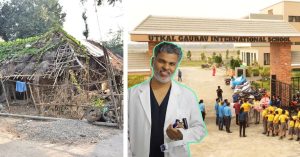‘Golden’ Pune Couple Left Everything Behind to Transform Remote Manipur Village!
"How different would our rural areas be if so many more take up such incredible challenges, instead of their expertise being laid to rest after retirement?," writes a deeply impressed IAS officer Armstrong Pame.

What inspires a couple in their mid-50s with successful careers to leave behind a comfortable life in the cosmopolitan city of Pune for Aben, a village situated in the remote hilly jungles of Tamenglong district, Manipur, where the nearest cell phone tower is 20 km away?
The Better India spoke to David Gandhi, an agricultural scientist with over 30 years of experience and his wife Usha, a seasoned educationist, to find an answer to this question.
“I’ve been a consultant in the NGO sector for about 15 years now. In mid-2016, I visited Aben for a project on agriculture and natural resource management. It was my first visit to the Northeast, and Aben was the last village I visited,” says David, speaking to TBI, over an irregular phone line.
Aben is a village barely touched by modern civilisation. It is populated by members of the Zeme Naga tribe, who depend on shifting cultivation (jhum cultivation) and the forest for sustenance.
The nearest town, Jiribam, located on the Assam-Manipur border is 60 km away, and it takes six hours to get there because no pakka roads link the village.
It rains for eight months a year, and the only way to reach the district headquarters of Tamenglong is either by foot or a 4×4 vehicle—and this is possible for only about four months in a year.
In jhum cultivation, farmers clear a segment of the jungle (mainly bamboo forests) and burn the vegetation left. The ash left behind provides nutrients for the crops they grow, primarily rice. There is no need for any external fertiliser.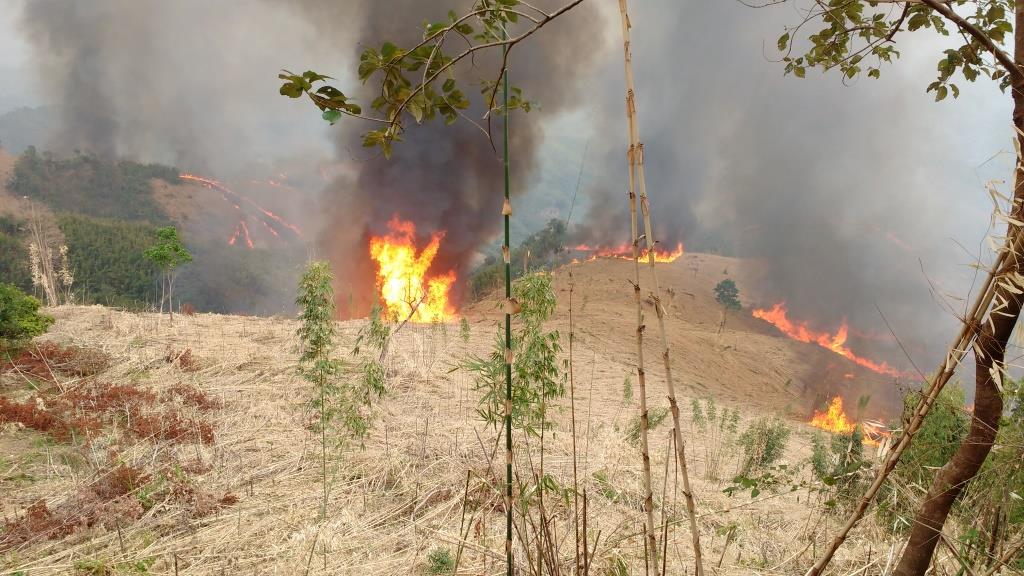
However, it is not possible to cultivate crops on the land for more than a year, and experts have argued that it’s an unsustainable form of agriculture resulting in increased air pollution, soil erosion and even landslides.
Due to the rising population, there has been a fall in the yield since the reduction in the duration of the jhum cycle does not allow sufficient time for the land to recover. Moreover, jhum is an extremely labour-intensive endeavour, and there are very few young people to work in the fields.
“Locals had reported that yields have reduced by nearly 50%, and rice production was sufficient to meet their food needs for only six to seven months in the year. Frankly, even I didn’t know the answers, even though I’m an agriculture scientist with 30 years of work experience. Thus, I took it upon as a challenge to stay here and understand the process. The idea was to discuss these concerns with locals and find a way forward,” says David.
For David, the solution lay in adapting the SALT (Sloping Agriculture Land Technology) approach, first developed on the sloping agricultural fields of the Philippines.
“When suitably adapted to the local conditions, it has the potential to offer the hill tribes with an alternative method of agriculture, which while being climate smart, will also provide the farmers with a means of sustainable livelihoods,” says David.
With no regular way of commuting to Aben, he had no choice but to live there if he wanted to make a difference. One consequence of the absence of infrastructure is that nobody goes there.
“I’ve been here for nearly two and a half years, and barely any government officers have visited the village; it does not even have a health centre. The government presence is minimal,” he adds.
Soon, his wife Usha also joined him there. PESCH (Peoples’ Endeavor for Social Change), a Jiribam-based NGO helped them set up base in Aben.
“My wife and I aren’t retired. We are in our mid-50s and thought we should do something worthwhile before we grow old and feeble,” says David.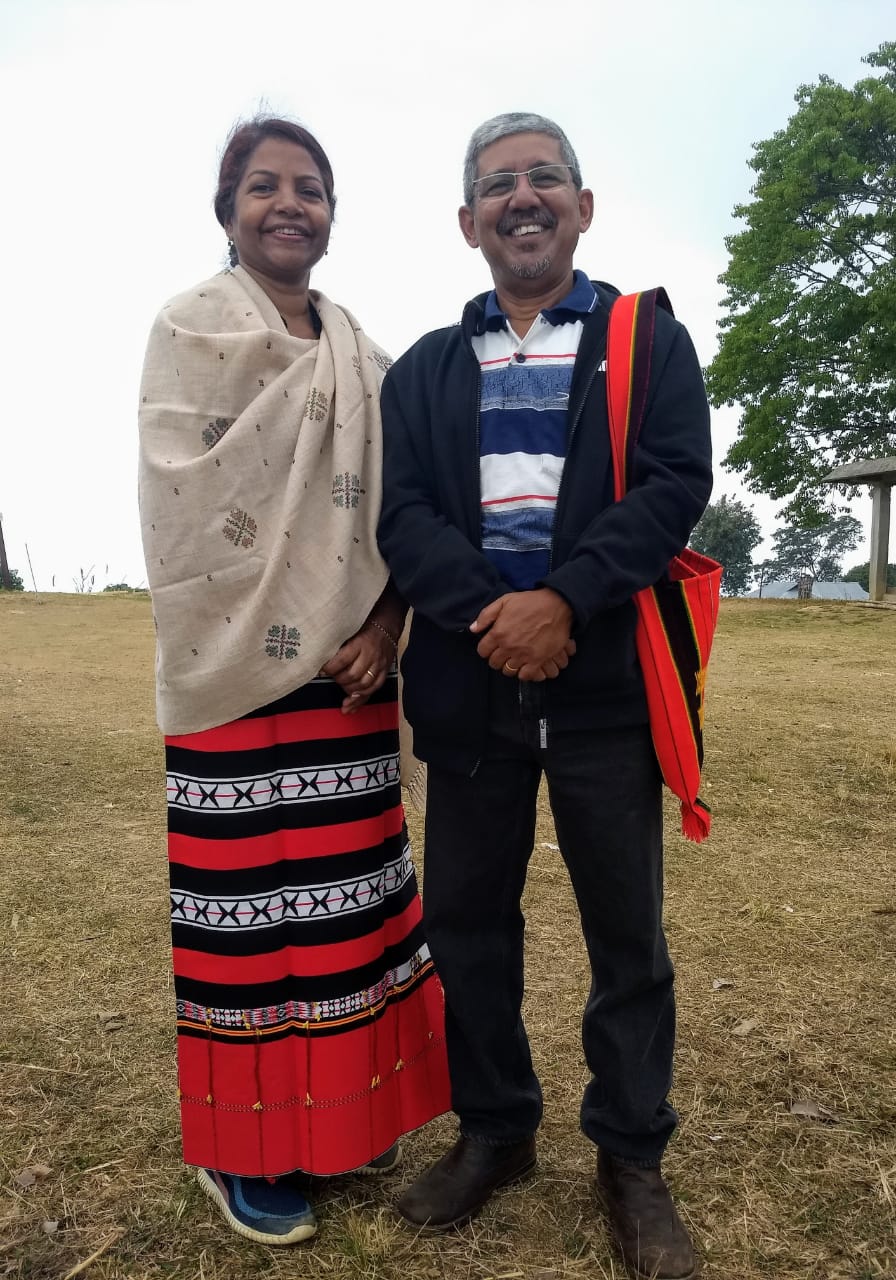
From jhum to SALT
David began by convincing the farmers that jhum cultivation was unsustainable.
“What I told them was that they didn’t have to stop jhum cultivation entirely, but at least try out the SALT model. The farming season starts here in March, and that is when they start cutting and burning the forest. The crops are sown in April-May, and the harvest takes place in September-October. In 2017, we did a SALT demonstration with one willing farmer for the entirety of the agriculture season,” says David.
Every week, he would also conduct a seminar on current agricultural needs for locals with the help of a local translator, acquiring a small projector and downloading relevant agriculture-related content online.
Depending on the season, he would take them through different agricultural techniques, livestock development, water harvesting, poultry vaccination and piggery, among others.
These seminars helped reactivate the village development committee (VDC), a voluntary association of village elders for local administration. All policy decisions were taken in these meetings. With their blessings, these weekly seminars and regular SALT demonstrations began attracting local farmers.
“The objective is to gradually wean them off jhum cultivation over the course of three to four years, and eventually adopt SALT. Looking at our demonstration, 50 out of 75 households decided to try out SALT,” he says.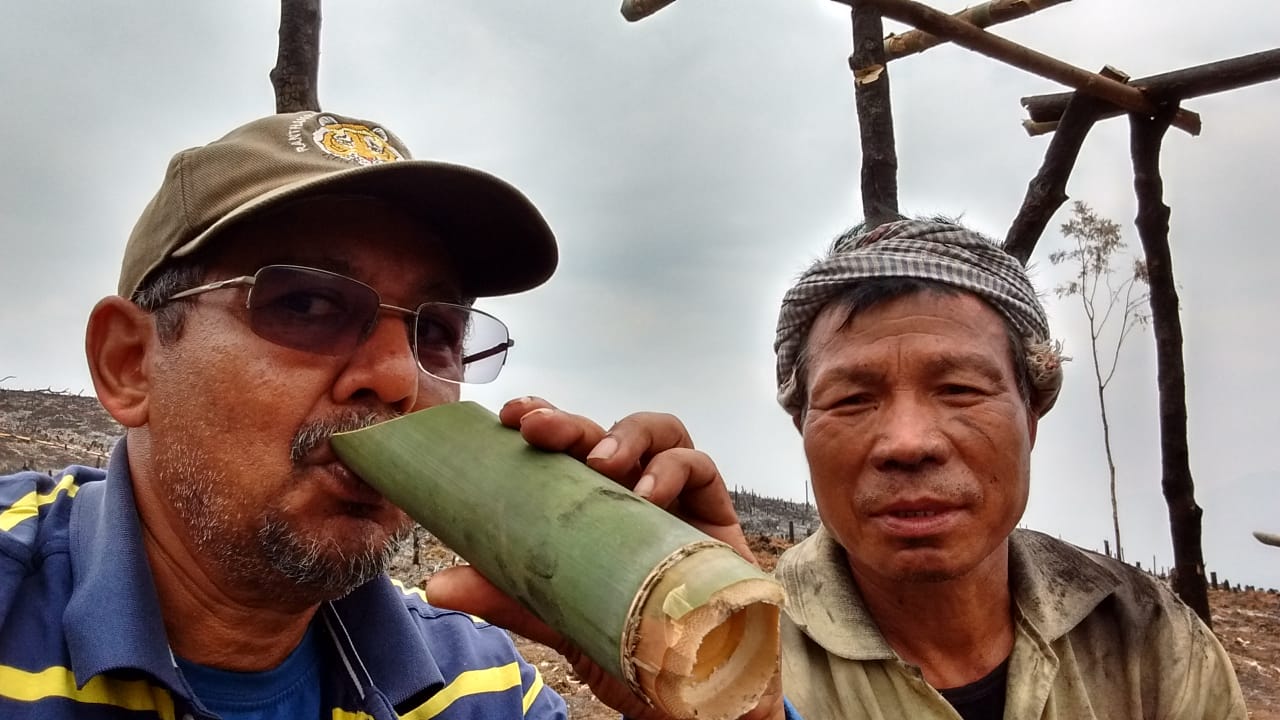
Under SALT, farmers create hedgerows of nitrogen-fixing plants (NFPs) along the contours of their field.
Examples of NFPs include legumes (varied forms of dal), which are cultivated in the form of field crops, vegetables and tree crops on the strips in between the hedgerows.
These plants have nodules on their roots, which contain nitrogen-fixing bacteria. While the bacteria feed off the plant, the plant takes the nitrogen from the soil and converts to a form which it can absorb. This nitrogen is stored in the leaves.
When the leaves fall or when the chopped leaves are applied to the inter-row strips as mulch, the nitrogen stored in the leaves is released, and it enriches the soil. This resolves three concerns—controlling soil loss, preventing surface run-off of rain water and improving soil fertility.
The SALT initiative in Aben also involves rearing livestock, like goats who are fed with leguminous fodder species cultivated on the hedgerows. Rearing goats serve three essential functions—an additional source of income and food security, besides their dung, which is composted and applied to the soil to maintain soil fertility.
SALT requires less labour, few external inputs, offers food security, and marketable product. It is climate-friendly as well.
But, how do you convince locals to adopt SALT?
“This involved a great deal of social engineering, giving them the necessary incentives to adopt it. The only thing we needed of locals was their cooperation, and thankfully, they were very welcoming,” says David.
“We told the farmers, ‘if you guys make the contour lines, plant these seeds of nitrogen-fixing plants, which are available in the village in the rainy season, I will provide you with money to buy seedlings.’ It was a self-selection process. Then I asked the VDC to inspect those who met the criteria. Then I approached my friends on our WhatsApp group, who sent me some money to buy fruit saplings. I gave each farmer Rs 750 worth of saplings, and that started them off,” narrates David.
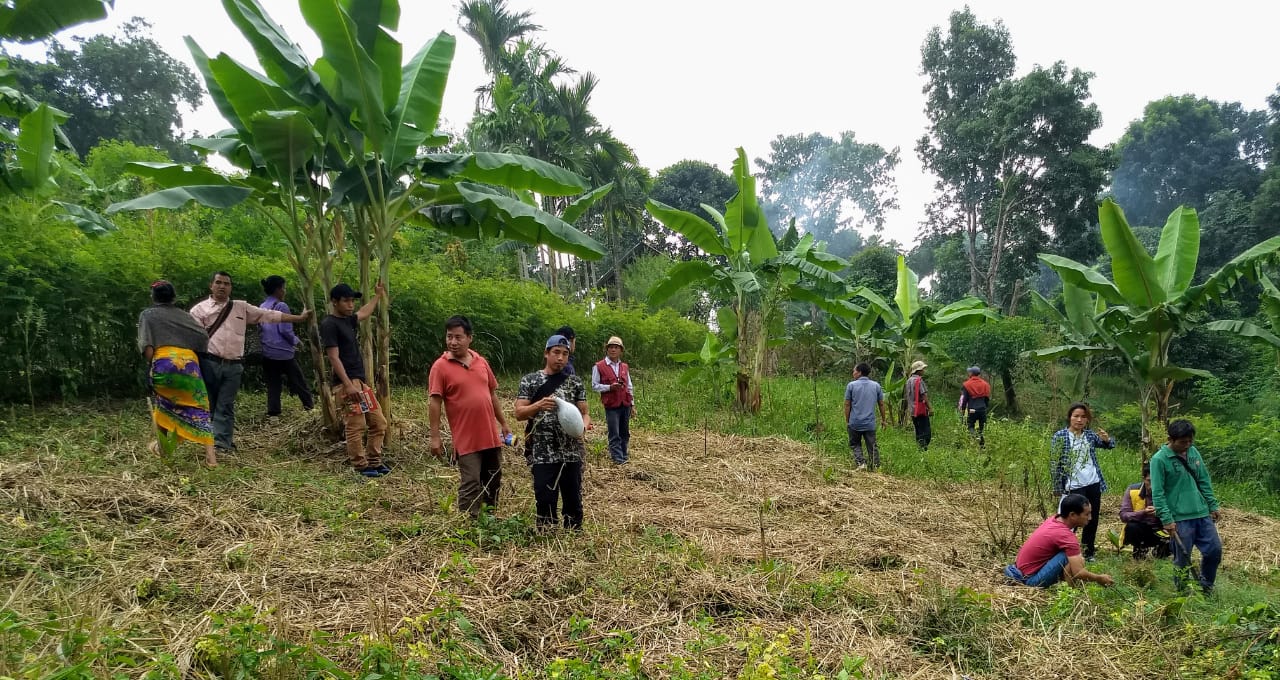
Eventually, even the 20 out of the 25 farming households who didn’t opt for SALT approached David asking for the same.
Finally, for the 2018 cropping cycle, 70 out of 75 farmers implemented SALT. Today, the VDC has just finished its inspection in preparation for the 2019 season.
Following the first exercise, the VDC and David told farmers engaged in SALT that they would be provided with enough money to buy goats if they had done a good job of looking after their fruit trees and developed hedgerows with enough fodder to feed the goats.
“Arun Nagpal, a school friend of mine who started Mrida, a Delhi-based for-profit company to help farmers, came forward and gave us Rs 1 lakh, which the VDC set up as a revolving fund. The best ten farmers who had done all the necessary groundwork received a loan of Rs 10,000 each to purchase goats that are to be housed in a small bamboo shed located in the SALT field. By October 2018, we were able to set up 10 goat units. This year, we will give the loan to 10 additional farmers. We are going with this process slowly to ensure that these first ten farmers are doing a good job,” says David.
Another major facet of the development process was the creation of a new masonry check-dam to store run-off and repairs to the existing reservoir near the spring.
The VDC led efforts with very active community participation. While locals contributed to half the cost of this project in terms of labour and locally-sourced material like bamboo, the rest came from the MGNREGA and private donation, which paid for the cost of cement and steel rods used to construct the masonry check dam.
Today, the village grows a greater variety of crops besides the traditional rice and pumpkin, like pineapple, tapioca, ginger, turmeric, banana, papaya, and other fruits and vegetables, and is on course for greater food security, mitigation of risk and other advantages associated with greater biodiversity. Avoiding the perils of monoculture, the village is on course for greater food security, mitigation of risk and other advantages associated with greater biodiversity.
There is also a livestock component. Each female goat delivers four kids in a year. The males are sold for meat, and marketing them doesn’t require a significant investment.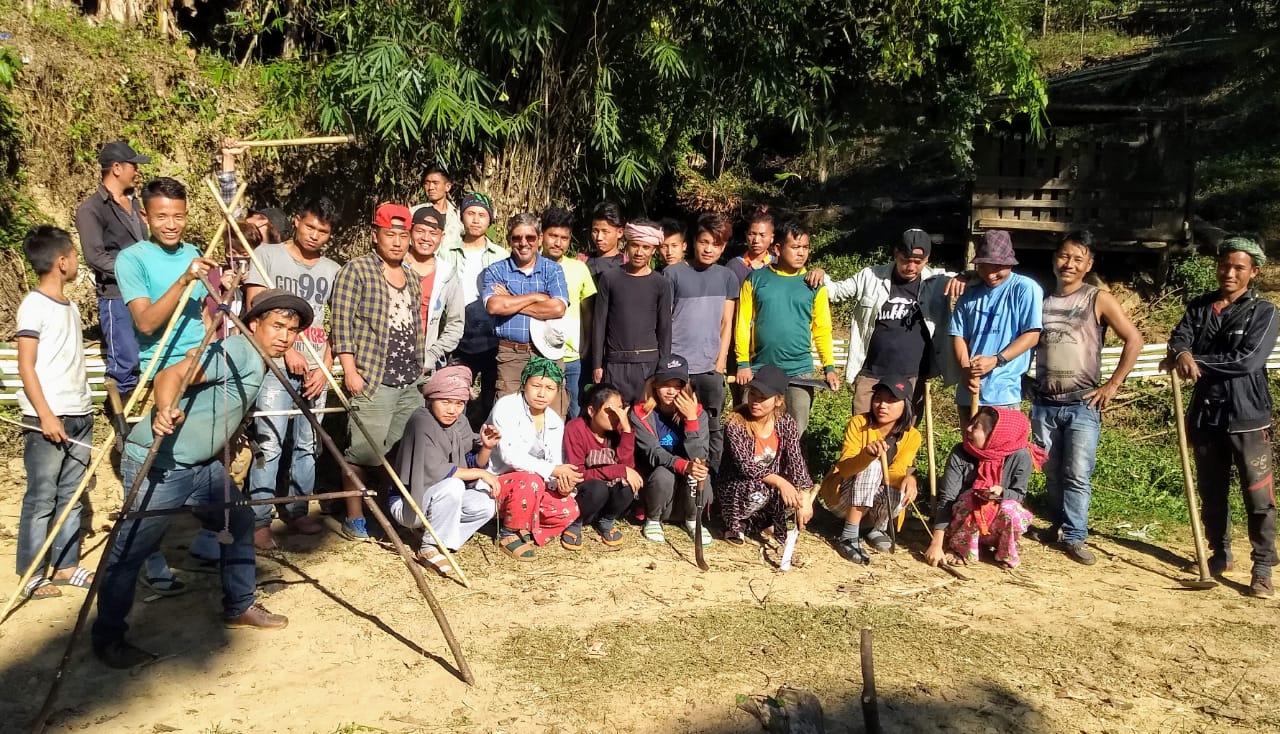
David’s application of SALT has received recognition from the Climate CoLAb, a project of the esteemed Massachusetts Institute of Technology (MIT), USA.
“Moreover, farmers from surrounding villages are coming for visits. Armstrong Pame, the former Deputy Commissioner, came with two farmers from each of the surrounding 40 villages to study SALT, last year. So convinced he was by SALT, he included it as an option under the District Rural Development Agency’s (DRDA) Integrated Watershed Management Programme (IWMP),” he says.
Educating the little ones
Meanwhile, when Usha first reached Aben, what she saw left her bewildered. “When we came here during our first visit, the one thing that struck us was the sorry state of schools,” she says, speaking to The Better India.
The only primary school there had no blackboard, government-appointed teachers hardly visited the school, and the educated ones who had either passed their 10th and 12th board exams from the village served as substitute teachers.
Coming from a place like Pune, it was beyond her imagination that a Class X or XII pass would be allowed to teach in a primary school with no teacher training whatsoever.
The medium of instruction is supposed to be English, but the children were taught in Zeme and were completely unfamiliar with the English language.
Finally, there were classes only from the nursery section to Class 5. She also noticed the huge dropout rate. For example, in Class 5, there were only two students, whereas, in the nursery section, the enrollment was more than 30. “On further probing, I found out that the problem begins in the kindergarten sections. Having said that, I had to commend the village residents for keeping the primary school going, because in many other villages we found that they were getting shut down because there were no teachers,” informs Usha.
“We were saddened to see that these intelligent and bright children were denied an opportunity to fulfil their potential. The region has lost generations of them,” she adds.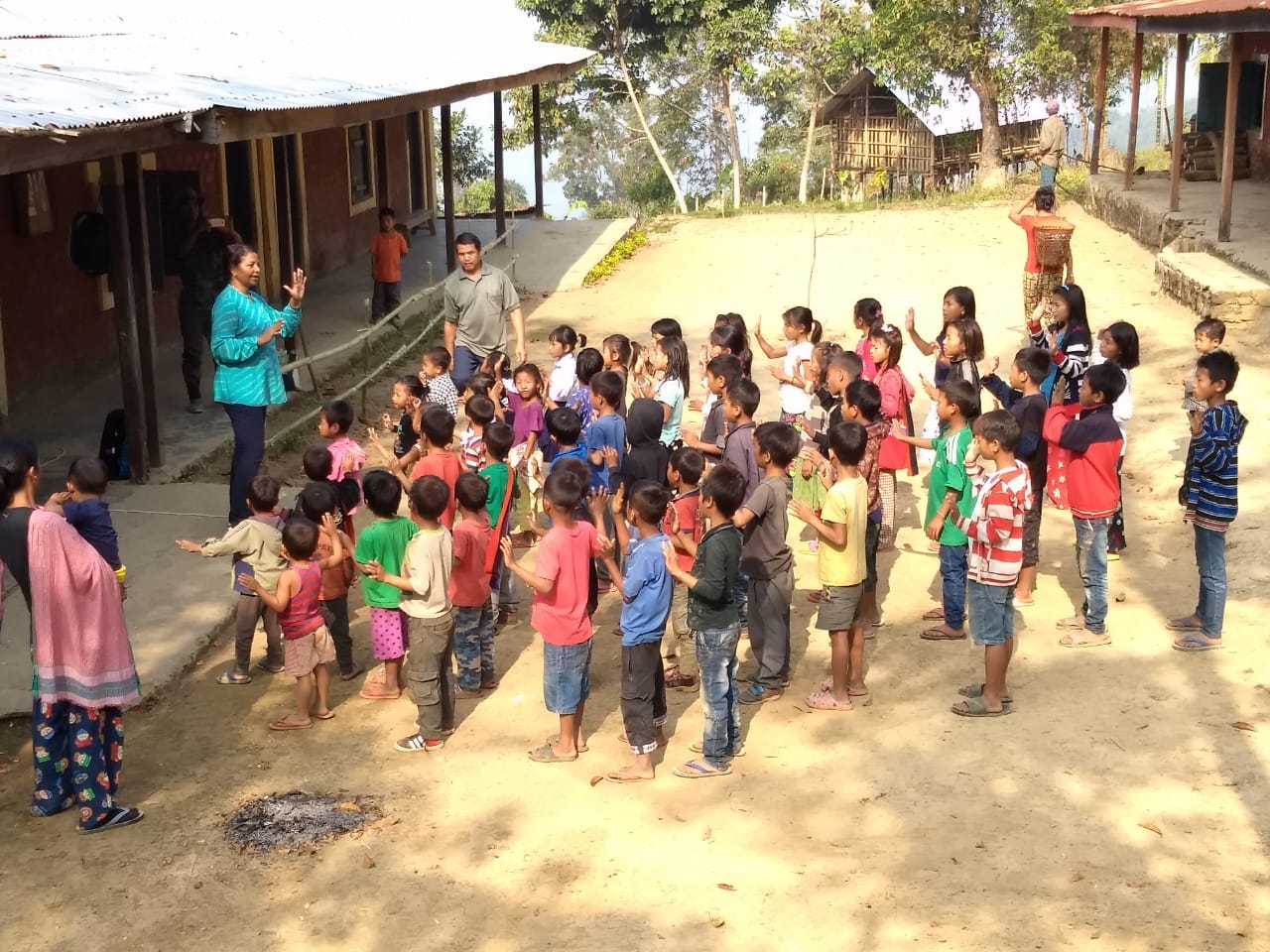
So, Usha took it upon herself fix this problem. She started with the KG section in 2018 but soon found out that they didn’t even have a syllabus.
Also Read: Employment to Agriculture: Meet the Startup Helping States Revolutionise Governance
“Fortunately, I have sisters who are principals of school and, teachers with 20-25 years of experience. I told them about this whole setup in Aben and took their help alongside local youth who come here for the holidays to develop the syllabus for the KG class. I developed a lot of audio and visual tools for these kids also with material from the internet, and that’s how we set up the KG class. We are proud to tell you that as of today, we have 39 students in the KG section, while from Class I to V we have 40 students,” says Usha.
As the school term based on the agricultural season, she developed the syllabus for the term beginning in February, which ends in November.
“Another thing I observed is that in December and January, the holiday season, the children are cut off from any sort of learning and when they return to school in February, they struggle to cope. So, I started taking extra classes during the holiday months,” she says.
Usha’s friends and family donated books and materials like crayons, and colouring books, while she purchased alphabet charts and other learning books last year and sold it to families here at half rate, which allowed students to continue learning at home. The intention behind not giving them for free was to make families appreciate the value of these learning materials.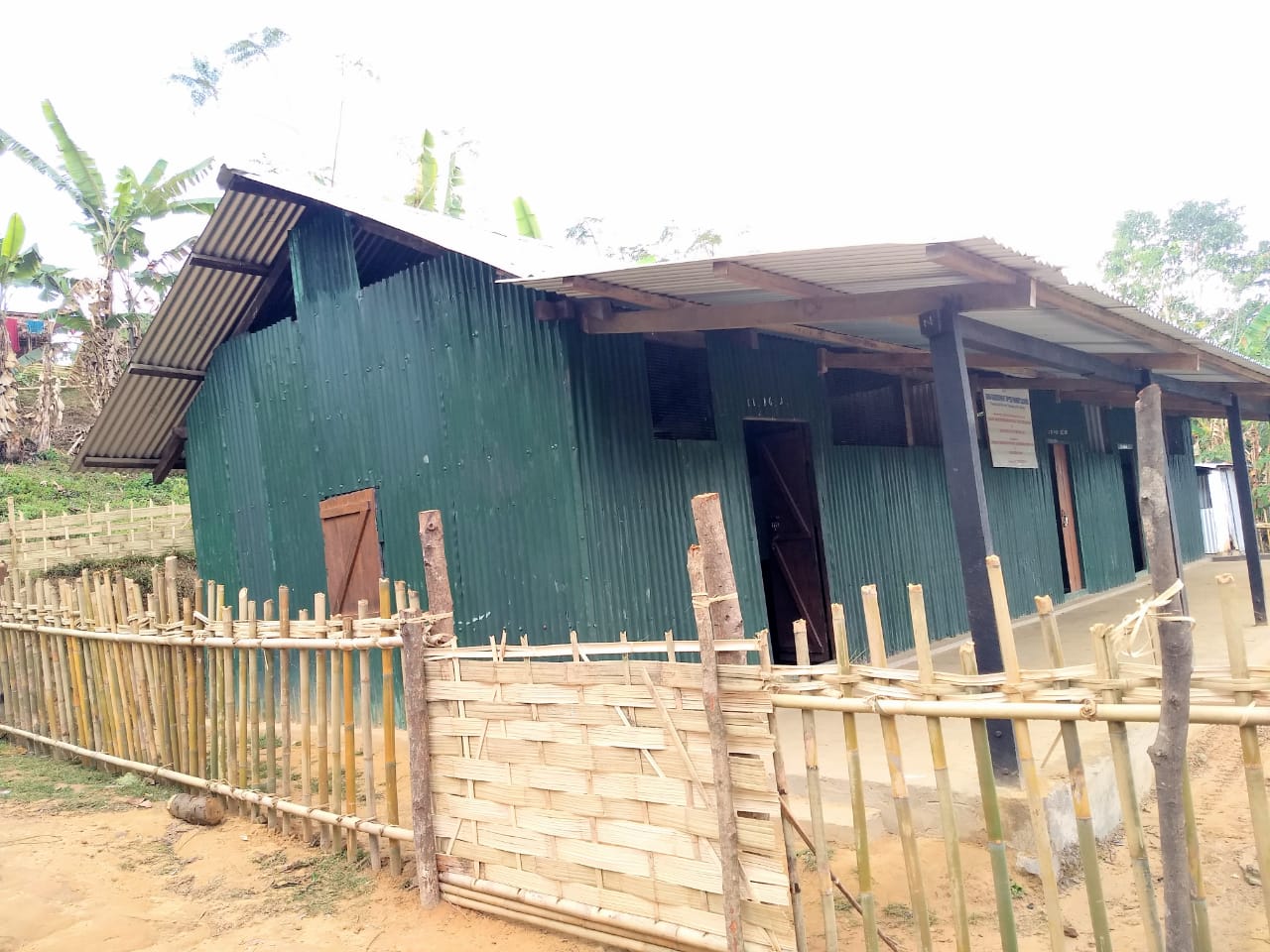
“My message was ‘buy these learning materials, and have something in the house which will make your children ask questions.’ About 34 parents purchased these materials. This year I have also been training two substitute teachers for the KG section for about three hours every day,” says Usha.
Up to Class II, it’s alright. When they come to Class III, that’s when subjects like math, basic science, environmental studies, among others, becomes very difficult. That’s the next challenge.
Another significant intervention that Usha and the local VDC had initiated was the renovation of a dilapidated building which was converted into classes for children in the nursery children.
“We got the necessary funds thanks to Arun Nagpal (Mrida) who got in touch with Bengaluru-based NGO OSAAT (One School at A Time), to renovate the nursery section and part of the primary section. In September 2018, we moved the nursery section to the village itself. Thanks to the funding, we could purchase blackboards, which they didn’t have earlier, among other teaching material,” she says.
Besides all this, Usha also runs a daily evening class for nine mothers, who have expressed their desire to teach English to their children.On a daily basis, she runs a coaching class for mothers, helping them acquire the necessary English language skills from KG to Class X level.
Acceptance and Motivation
Both Usha and David sincerely appreciate the cooperation they have received from the locals. Both feel very welcomed, with Usha making it a point to state how cultured and gentle the locals are.
“To stay here, we had to appear before the elders in the local village court, and get inducted us into the Zeme Naga tribe. The reason is that living here you have to be self-sufficient. Everyone here is responsible for each other. If you are in any danger or fall ill, they take care of you. We’ve also picked up the basics of Zeme,” says David.
However, Usha sees it another way altogether.
“We work with a very free mind. Every evening, when the women go back from their field bagan, they bring leave some vegetables for us. There is no market and shops. We harvest our own rainwater on our roofs and that’s our source of water. We have constructed a small solar power system—a small panel with one or two LED bulbs and an inverter, and the electricity generated helps us to charge our mobiles and laptops,” adds Usha.
Also Read: Inka Time Aayega: Liked Gully Boy? Then Check Out Northeast’s thriving Hip Hop Scene!
It is sustainable living in the truest sense.
“We believe that we started something good here, and would like to see it through. We have never been this busy, but as long as our health is good and the situation here is fine, we would love to stay on,” remarks David.
“We have had to re-invent ourselves to face up to these challenges, but we come here with a lot of good experience in our respective fields. That is helping us a great deal. Fortunately, we also have people who are supporting us in different ways. We are here. We are living it,” concludes Usha.
(Edited by Gayatri Mishra)
Like this story? Or have something to share?
Write to us: [email protected]
Connect with us on Facebook and Twitter.
This story made me
- 97
- 121
- 89
- 167
Tell Us More
We bring stories straight from the heart of India, to inspire millions and create a wave of impact. Our positive movement is growing bigger everyday, and we would love for you to join it.
Please contribute whatever you can, every little penny helps our team in bringing you more stories that support dreams and spread hope.






